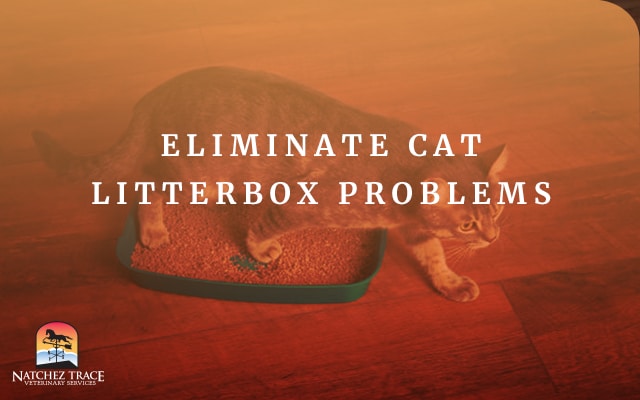Working to Eliminate Cat Litterbox Problems?
We know this can be tough!
Here are some thoughts, tips, and ideas that are sure to bring the lives of you and your cat into balance and harmony!
One in every ten cats will experience a litterbox problem during its lifetime.
When cat litterbox problems occur, the cause is usually found to be in either the social or dietary management of the pet’s care.
Check the list below to see if something has occurred recently that could be the cause of your cat’s litterbox problem. It’s much easier to eliminate the problem if you know what the cause is!
The Most Common Causes of Litterbox Problems
The cat:
- is suffering from a medical problem involving the urinary tract.
- experiences a bout of geriatric constipation
- gets locked out of reach of the litterbox
- is stressed by a change in routine or environment, including a new baby, new furniture, work schedule changes, vacations, overnight guests, or a move.
- was never properly trained to use the litter box in the first place.
- developed an aversion to the texture of the litter over time.
- an unneutered male, has come of age and is marking his territory.
- an unspayed female, is in heat and advertising for suitors.
- sees or smells stray cats nearby.
- is kept from using the litter box by another animal in the house.
The owner:
- does not keep the litter box as clean as the cat wants it to be.
- changes the brand or type of litter. (especially deodorized or perfumed litter)
- changes the location of the litter box.
- gets a new box and throws out the old one.
- cleans the litter box with too harsh a cleaning product.
- puts the litterbox in a place too busy or not private enough for the cat.
- lives in a large home and needs more than one litter box.
- has too many cats and not enough territory.
- has too many cats and not enough litter boxes
Tips to Eliminate Cat Litterbox Problems:
- Don’t leave food out all the time. Feed your cat twice daily and closely supervise afterward for at least one hour. Make sure to guide your cat to the litterbox during this supervised time.
- Clean litterboxes daily and refresh with new litter at least once each week. A great method is to use generic cat litter and empty the entire litterbox daily. You can purchase an odor neutralizer if you feel the need, and lightly spray it on the litter to control odor.
- Litter boxes must be large enough to allow several eliminations without the pet having to step on a previously used spot. Be sure to supply more than one litter box if you own several cats!
- Plan a 5-minute play session with the cat in the morning and at night.
- Prolonged stroking can lead to problems. Limit stroking no longer than a couple of minutes at a time, then encourage your cat to play with a toy.
- If spraying has followed an invasion of the cat’s territory by a new baby, guest, new pet, etc.: Give your cat more upbeat, playful attention at times when the invader first enters the cat’s area. Doing so helps associate the target of jealousy with pleasure, rather than social neglect.
- If the cat sprays in your presence, try triggering a startling reflex of other than human origin. Try dropping a pot or slapping a table with your hand or ruler. This sudden noise should stop the urination and allow you to take your cat to the litter box. Stay with your cat until it urinates, then be sure to praise it lavishly.
- Place your cat in another room while you clean up soiled spots. Use a professional odor neutralizer that will remove the odor, not just cover it up. Makes sure to use a cleaner that does not contain ammonia. Ammonia is a normal constituent of urine and only makes matters worse. One teaspoon of apple cider vinegar put into one feeding each day will help alter the urine odor possibly preventing the desire to mark an area again.
- Feed the cat at the location of the soiling. Leave the food dish, even though empty, down at the spot until the next meal. If you notice several soiled areas, split the feeding into however enough dishes to cover the areas. Slowly remove bowls after a minimum of four days without soiling. If your cat regresses back to old habits, you must reinstate feeding in each spot until another dry spell is accomplished. This program is usually successful in six weeks or less.








